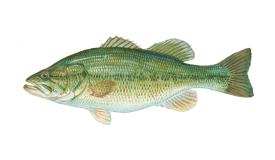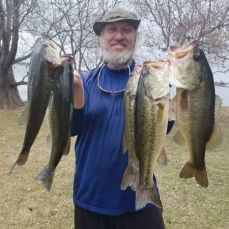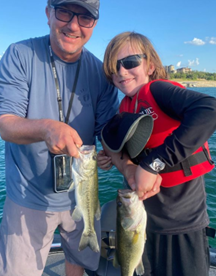Fish the Conditions for Fall
Noviembre 23, 2019
Austin
1 foto


Bass (Largemouth)
Trip Summary
Trip Summary
Fall fishing can be finicky when the conditions are changing almost daily here in the Central Texas region. During the months of November and December, the temperatures can swing from the low 20s one day to the high 70s the next. These massive temperature swings will affect the movement and feeding behavior of bass, so the techniques used on one day to load the boat won’t necessarily work the next day, if the conditions are substantially different. This can be frustrating for anglers because bass love consistency. When the weather is consistent, the bass will hit the same bait in the same place day after day, but when the conditions change, the bass will barely move. Here are some pointers and patterns that can help anglers have a successful day on the water when the conditions are constantly changing during the fall months.
I’ve been on the water probably a dozen times over the past two weeks and had the opportunity to fish all stages of the cold fronts. Anglers can pretty much break these weather systems into two stages, each having their own conditions: pre-frontal and post-frontal. I typically won’t fish as the cold front is moving through because the winds on the lake can gust up to and exceeding 40 mph. Once the winds get above 20 mph the conditions can be hazardous on the Central Texas lakes.
Before the cold front moves into the area, the winds are usually nice, the clouds are low and rolling in. You won’t really notice a big change in the temperature, and we haven’t had any heavy rains recently. The water’s surface temperature has been in the low to mid 60s and I can see a ton of bait on the banks. It’s time to fish fast and go for a reaction strike!
I’ve been sticking to the main lake lately for a few reasons. Whenever the weather changes the bass will move vertically up and down the water column. When the clouds are out, I fish fast and shallow. The bass have been hiding behind all the rocks, tree stumps and laydowns. I’m just pitching a small crankbait on spinning gear to each piece of structure, and some casts may be as close as 10 feet away. I know the bass can see me and still they crush the crankbait as it bounces off the laydown or tree stump. I’ll make longer casts along the rocky bank, keeping the boat almost on the bluff wall, and the crankbait bounces and deflects off the rocks. We’ve caught as many as 15 bass on a single stretch covering about 100 yards!
After the cold front, the high-pressure system takes over. The water is a little cooler in the morning, the skies are clear and bluebird. The bass are in the same area but running the banks and fishing fast usually won’t load the boat like the day before. I find the fish in these areas have moved vertically in the water column and are now a little deeper. Using a slower presentation with a shaky head, drop shot, or Texas rig in craw colors has been working great! The high-pressure system pushes the bass deeper into the 10 to 25-foot range so casting to the bluff wall and dragging the bait slowly to the depths seems to trigger a good strike. As the bait is slowly falling down the bluff, bouncing off the various rocks and brush piles, the bass just inhale it. When your line goes slack or you feel a tick, set the hook!
When you find a good population of fall bass and fish the conditions, you should be able to have a successful day on the water. On deep water impoundments like Lake Travis, the bass will move up and down the water column when the fronts and pressure system move in to the area.




